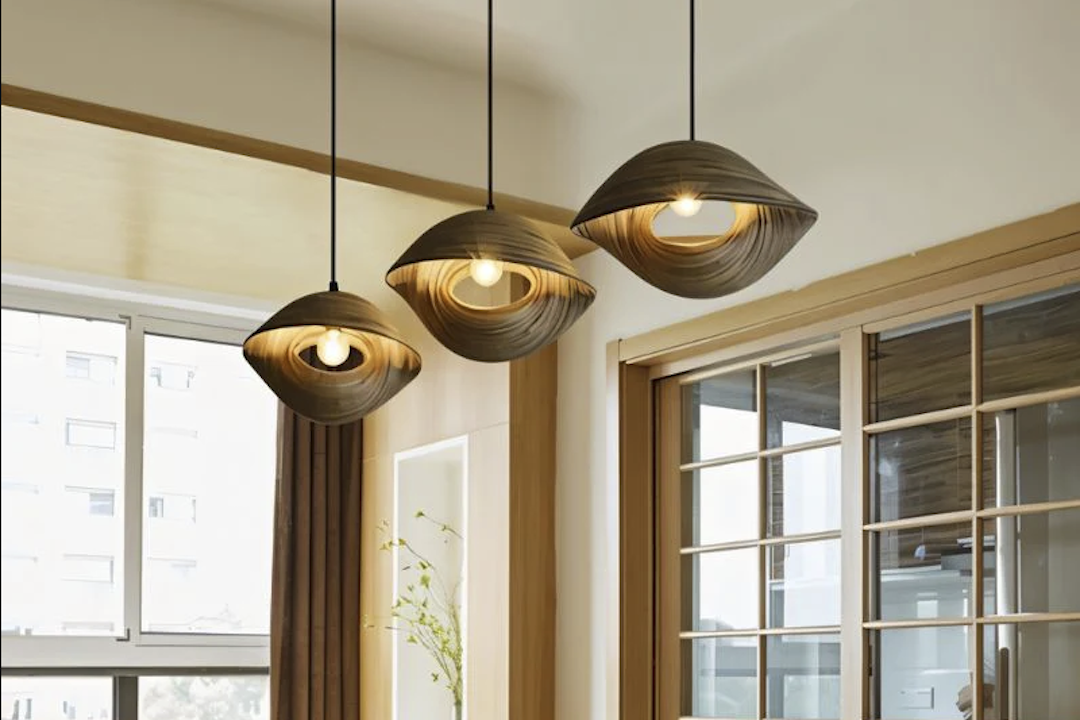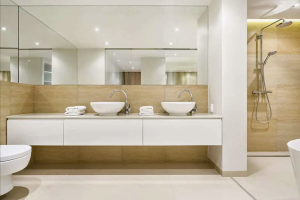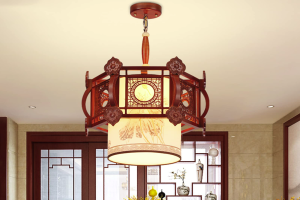Contemporary elegance is a term that encapsulates the essence of modern design, where simplicity meets sophistication. In the realm of interior design, this concept manifests itself in various forms, one of the most striking being the chandelier. Traditionally associated with opulence and grandeur, chandeliers have undergone a remarkable transformation, evolving into pieces that embody minimalism and functionality while still making a bold statement.
The contemporary chandelier Zomier serves not only as a source of illumination but also as a focal point that enhances the aesthetic appeal of a space. The allure of contemporary elegance lies in its ability to blend seamlessly with diverse design styles, from industrial lofts to sleek modern homes. This versatility allows chandeliers to transcend their historical roots, adapting to the needs and tastes of today’s homeowners.
As we delve deeper into the evolution of modern chandelier designs, we will explore how these fixtures have redefined elegance in contemporary interiors, showcasing their ability to harmonize with various elements while maintaining a distinct character.
The Evolution of Modern Chandelier Designs
The journey of chandelier design has been marked by significant shifts in style and function. Historically, chandeliers were grandiose fixtures adorned with crystals and intricate metalwork, often found in palatial settings. However, as design philosophies evolved, so too did the chandelier.
The mid-20th century saw a departure from ornate designs towards more streamlined forms, reflecting the burgeoning minimalist movement. Designers began to experiment with geometric shapes and unconventional materials, leading to the birth of what we now recognize as contemporary chandeliers. In recent years, the evolution has continued at an accelerated pace, driven by technological advancements and changing consumer preferences.
Today’s chandeliers often feature clean lines and innovative designs that prioritize both aesthetics and practicality. For instance, the use of LED technology has allowed for slimmer profiles and more energy-efficient options without sacrificing brightness or style. This shift not only caters to modern sensibilities but also aligns with a growing awareness of sustainability in design.
As we examine specific examples of contemporary chandelier designs, it becomes evident that these fixtures are no longer mere sources of light; they are artistic expressions that reflect the values and aspirations of contemporary society.
Materials and Finishes in Modern Chandelier Designs
The choice of materials and finishes plays a pivotal role in defining the character of contemporary chandeliers. Gone are the days when crystal was the sole material associated with elegance; today’s designers draw inspiration from a wide array of substances to create unique lighting fixtures. Metals such as brass, copper, and matte black finishes have gained popularity, offering a modern twist on traditional designs.
These materials not only provide durability but also contribute to the overall aesthetic, allowing for a range of styles from industrial chic to sleek sophistication. In addition to metals, glass remains a favored material in contemporary chandelier design. However, it is no longer limited to clear or frosted finishes; designers are now exploring colored glass and innovative shapes that add depth and intrigue to their creations.
For example, Murano glass chandeliers have become synonymous with luxury, showcasing intricate craftsmanship while incorporating vibrant hues that can transform a space. Furthermore, natural materials like wood and stone are being integrated into chandelier designs, reflecting a trend towards organic aesthetics that resonate with nature-inspired interiors. This diverse palette of materials not only enhances visual appeal but also allows for greater customization, enabling homeowners to select fixtures that align with their personal style.
Innovative Lighting Technology in Contemporary Chandeliers
The integration of innovative lighting technology has revolutionized the way chandeliers function within modern spaces. Traditional incandescent bulbs have largely been replaced by energy-efficient LED options that offer longer lifespans and reduced energy consumption. This shift has not only made chandeliers more sustainable but has also opened up new possibilities for design.
LED technology allows for dimmable features and color temperature adjustments, enabling users to create different atmospheres depending on the occasion or time of day. Moreover, smart lighting systems have emerged as a game-changer in chandelier design. With the advent of home automation technology, chandeliers can now be controlled remotely via smartphones or voice-activated devices.
This level of convenience allows homeowners to adjust brightness levels or change colors with ease, enhancing both functionality and ambiance. For instance, a chandelier in a dining room can be dimmed for an intimate dinner setting or brightened for family gatherings, all at the touch of a button. As designers continue to incorporate these technological advancements into their creations, contemporary chandeliers are becoming increasingly versatile and user-friendly.
The Role of Contemporary Chandeliers in Interior Design
Contemporary chandeliers play a multifaceted role in interior design, serving as both functional lighting sources and artistic focal points. Their ability to draw the eye and anchor a room makes them essential elements in various spaces, from grand entryways to cozy dining areas. A well-placed chandelier can elevate the overall aesthetic of a room, adding layers of depth and interest that enhance the surrounding decor.
For example, a minimalist chandelier with clean lines can complement a modern dining table while providing essential illumination for meals. Furthermore, contemporary chandeliers can be used strategically to define spaces within open floor plans. In homes where living areas blend seamlessly into one another, a striking chandelier can delineate the dining area from the living space, creating visual boundaries without the need for physical walls.
This approach not only maximizes space but also fosters an inviting atmosphere where different activities can coexist harmoniously. As interior designers increasingly embrace open-concept layouts, the role of chandeliers as statement pieces becomes even more pronounced.
Sustainability and Eco-Friendly Practices in Modern Chandelier Designs
As environmental consciousness continues to shape consumer preferences, sustainability has become a key consideration in modern chandelier designs. Designers are increasingly prioritizing eco-friendly materials and manufacturing processes to create lighting fixtures that minimize environmental impact. For instance, many contemporary chandeliers are crafted from recycled metals or sustainably sourced wood, reflecting a commitment to responsible sourcing practices.
In addition to material choices, energy efficiency is another critical aspect of sustainable chandelier design. The widespread adoption of LED technology has significantly reduced energy consumption compared to traditional lighting options. Many manufacturers are now focusing on creating products that not only meet aesthetic standards but also adhere to stringent energy efficiency guidelines.
This shift towards sustainability resonates with consumers who seek to make environmentally responsible choices without compromising on style or quality.
Customization and Personalization in Contemporary Chandeliers
The trend towards customization and personalization has gained momentum in recent years, allowing homeowners to create unique lighting solutions that reflect their individual tastes and lifestyles. Many contemporary chandelier manufacturers offer customizable options, enabling clients to select everything from materials and finishes to sizes and configurations. This level of personalization ensures that each chandelier is tailored to fit seamlessly within its intended space while embodying the homeowner’s aesthetic preferences.
For example, a homeowner may choose a modular chandelier design that allows for adjustable components, enabling them to change the arrangement or scale based on their evolving needs or seasonal decor changes. This flexibility not only enhances the functionality of the fixture but also fosters a sense of ownership and connection between the homeowner and their space. As customization becomes more accessible through advancements in manufacturing technology, contemporary chandeliers are increasingly seen as expressions of personal style rather than mere decorative elements.
The Future of Modern Chandelier Designs
Looking ahead, the future of modern chandelier designs appears promising as designers continue to push boundaries and explore new possibilities. The integration of smart technology is likely to expand further, with advancements in artificial intelligence and automation paving the way for even more intuitive lighting solutions. Imagine chandeliers that can adapt their brightness based on natural light levels or respond dynamically to user preferences throughout the day.
Moreover, as sustainability remains at the forefront of design conversations, we can expect an increased emphasis on eco-friendly practices within chandelier manufacturing. Innovations in materials science may lead to new sustainable options that challenge traditional notions of luxury while maintaining high aesthetic standards. Additionally, collaborations between artists and designers could yield one-of-a-kind pieces that blur the lines between functional lighting and fine art.
As contemporary chandeliers continue to evolve, they will undoubtedly remain integral components of interior design, reflecting not only individual tastes but also broader cultural shifts towards sustainability and innovation. The journey from opulent fixtures to minimalist masterpieces illustrates how chandeliers have adapted over time while retaining their status as symbols of elegance and sophistication in modern interiors.



